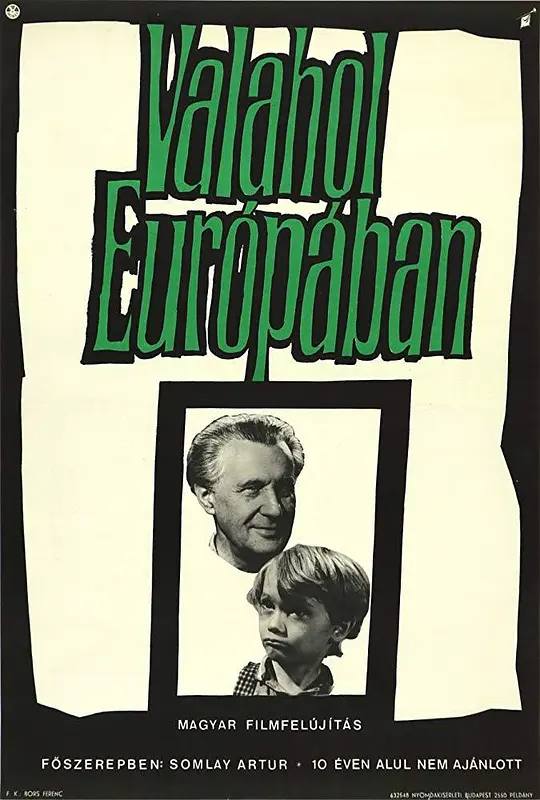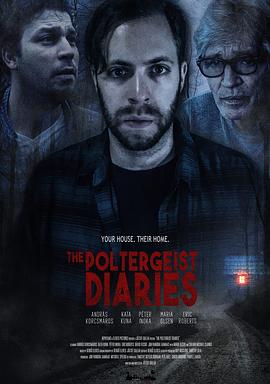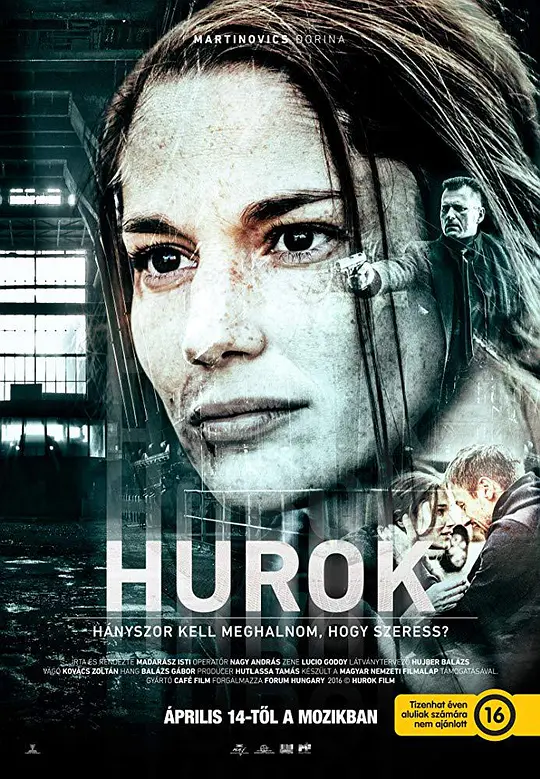搜索词:Zsuzsa Bánki
欧洲的某个地方
Artúr Somlay,Miklós Gábor,Zsuzsa Bánki
Somewhere in the remote region, the war ends. In the midst of ruined cities and houses in the streets, in rural hamlets, everywhere where people still live, are children who have lost their homes and parents. Abandoned, hungry, and in rags, defenseless and humiliated, they wander through the world. Hunger drives them. Little streams of orphans merge into a river which rushes forward and submerges everything in its path. The children do not know any feeling; they know only the world of their enemies. They fight, steal, struggle for a mouthful of food, and violence is merely a means to get it. A gang led by Cahoun finds a refuge in an abandoned castle and encounters an old composer who has voluntarily retired into solitude from a world of hatred, treason, and crime. How can they find a common ground, how can they become mutual friends? The castle becomes their hiding place but possibly it will also be their first home which they may organize and must defend. But even for this, the price will be very high. To this simple story, the journalist, writer, poet, scriptwriter, movie director, and film theoretician Béla Balázs applied many years of experience. He and the director Géza Radványi created a work which opened a new postwar chapter in Hungarian film. Surprisingly, this film has not lost any of its impact over the years, especially on a profound philosophical level. That is to say, it is not merely a movie about war; it is not important in what location and in what period of time it takes place. It is a story outside of time about the joyless fate of children who pay dearly for the cruel war games of adults. At the time it was premiered, the movie was enthusiastically received by the critics. The main roles were taken by streetwise boys of a children's group who created their roles improvisationally in close contact with a few professional actors, and in the children's acting their own fresh experience of war's turmoil appears to be reflected. At the same time, their performance fits admirably into the mosaic of a very complex movie language. Balázs's influence revealed itself, above all, in the introductory sequences: an air raid on an amusement park, seen in a montage of dramatic situations evoking the last spasms of war, where, undoubtedly, we discern the influence of classical Soviet cinematography. Shooting, the boy's escape, the locomotive's wheels, the shadows of soldiers with submachine guns, the sound of a whistle—the images are linked together in abrupt sequences in which varying shots and expressive sharp sounds are emphasized. A perfectly planned screenplay avoided all elements of sentimentality, time-worn stereotypes of wronged children, romanticism and cheap simplification. The authors succeeded in bridging the perilous dramatic abyss of the metamorphosis of a children's community. Their telling of the story (the scene of pillaging, the assault on the castle, etc) independently introduced some neorealist elements which, at that time, were being propagated in Italy by De Sica, Rossellini, and other film artists. The rebukes of contemporary critics, who called attention to "formalism for its own sake" have been forgotten. The masterly art of cameraman Barnabás Hegyi gives vitality to the poetic images. His angle shots of the children, his composition of scenes in the castle interior, are a living document of the times, and underline the atmosphere and the characters of the protagonists. The success of the picture was also enhanced by the musical art of composer Dénes Buday who, in tense situations, inserted the theme of the Marseilaise into the movie's structure, as a motive of community unification, as an expression of friendship and the possibility of understanding. Valahol Europaban is the first significant postwar Hungarian film. It originated in a relaxed atmosphere, replete with joy and euphoria, and it includes these elements in order to demonstrate the strength of humanism, tolerance, and friendship. It represents a general condemnation of war anywhere in the world, in any form.
吵闹鬼日记
安德拉斯·科克斯马斯,Péter Inoka,埃里克·罗伯茨,Kata Kuna,Dávid Fecske,Jon Vangdal Aamaas,玛利亚·奥尔森,Laura Ellen Wilson,Shawn Michael Clankie,Anita Tóth,Zsuzsanna Rednik,Emese Nagyabonyi,Péter Krenács,Zsófia Gallai,Laura Saxon,Charyse Monet,肖恩 C.菲利普斯
雅各布·泰勒搬到一个与世隔绝的小木屋后,突然消失得无影无踪。根据他留下的录像信息,他的家人、朋友和一名侦探试图找到围绕着他引发的诡异事件的答案。。。
母亲与疯子们
Eszter Ónodi,蒂伯·加斯帕尔,Petra Hovanyecz,György Barkó,朱利·芭丝蒂,达努塔·沙弗拉尔斯卡,Bálint Adorjáni,Kata Bartsch,Péter Bozsó,Csege Buvári,Kincsö Buvári,Lilla Buvári,Villö Buvári,Bálint Bán,维拉格·巴拉尼,Katinka Cseke,安东尼·塞尔纳,Mari Csomós,Ibolya Csonka,卡塔琳·真哲希,Zsuzsa Horváth,维卡·
电影回顾了匈牙利风雨飘摇的20世纪。一位92岁的匈牙利女性在与五十多岁女儿的对话中,回顾了她惊心动魄的一生。她成长于匈牙利动荡的年代,与一位帅气的军人一见钟情,为了避免战争的冲突,她一生搬家了27次。电影以幽默和温情的方式来呈现了这段不凡的个人经历。它不仅是一位女性的个人史,亦是匈牙利的国家历史。






